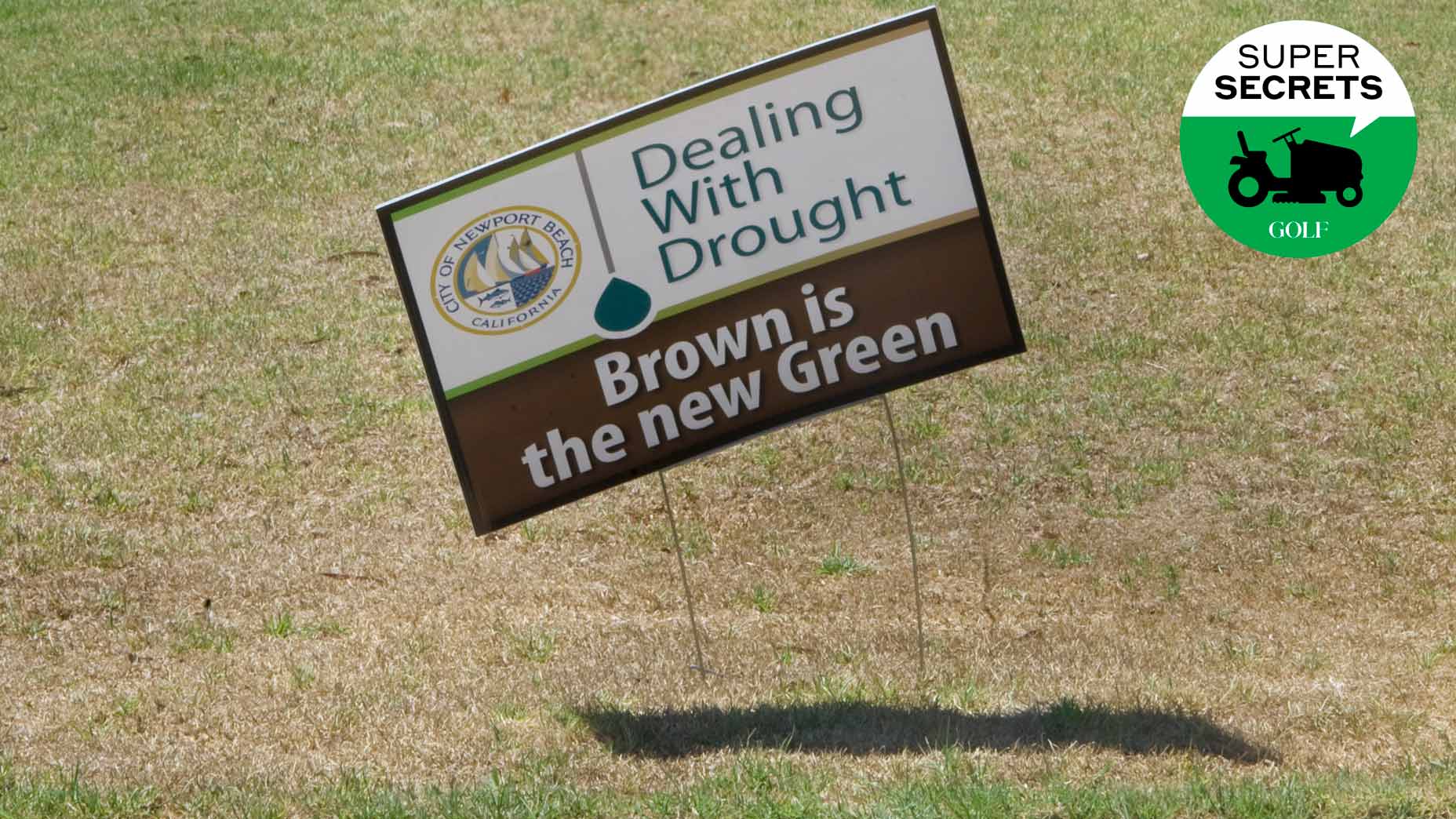4 quirky lawn care tips we learned from golf course superintendents in 2020

How could a fork help you take care of your lawn? Golf course superintendents told us that and more.
Getty Images
“There are no pictures on the scorecard” is another way of saying “there are a lot of ways to get things done.” That’s true in golf. And it’s true in golf course maintenance, as we learned this year in our conversations with superintendents, who taught us all kinds of turf-care tricks. Here are four of the most unconventional tips they shared.
1. Aerate with a Garden Fork
Aerating is an important agronomic practice that breaks up thatch, and promotes a healthy flower of air and nutrients into the root zone. Superintendents carry out the work with machines. But on a patch of turf as small as many yards, the job can also be done by hand, according to Jimmy Kidd, former longtime superintendent at Gleneagles, in Scotland, and founder of the Scottish Greenkeepers Association. Almost anything that makes a sufficient hole will do. “The equipment can be as simple as a garden fork inserted into soil and manipulated to create air spaces all over the lawn,” Kidd said.
2. Melt Ice With Sunflower Seeds
Ice can be a turf-killer, smothering the grass beneath it. Superintendents don’t want it covering their greens, and you don’t it blanketing your yard. How you do away with it is another matter. At George Wright Golf Course, outside Boston, superintendent Len Curtin told us that he often takes the standard route and sprinkles the ice with black sand or black organic fertilizer, both of which absorb sunlight, which in turn, helps melt the ice.
But every now and then, Curtin relies on a MacGyver method: scatters his frozen-over greens with sunflower seeds, which accomplish the same thing. “Just be sure that the seeds are feed-grade and unsalted,” Curtin said. And rake them up once the ice is melted, or you might wind up with an unwanted crop of sunflowers come spring.
Staff picks: The best from Nike
Shop Now3. Spray Down Frost
The preferred way to get rid of frost is to simply let it melt. But when time’s a-wastin’ and play absolutely, positively has to begin, superintendents sometimes take a short cut and spray their greens with water. That might sound counterintuitive (adding water to get rid of frozen water) but it can work, according to Rick Tegtmeier, who runs the maintenance show at Des Moines Golf & Country Club. Not that he recommends the practice for homeowners. “It’s not like you need to use your lawn for revenue,” Tegtmeier told us. “You’re better off doing what most of us do at the golf course and just wait for the sun to come and the frost to melt away.”
4. Use a Screwdriver for Water Management
How much water is enough water? Superintendents rely on irrigation gauges to measure what they’ve given their grass to drink, and there’s no reason you can’t do the same at home. But there are low-tech shortcuts, Dan Cutler told us. Cutler is the superintendent at Rio Verde Country Club, in Rio Verde, Ariz., and the co-host of From the Jingweeds, a podcast devoted to the turf-care trade.
A quick way to check if your grass has gotten enough water is to stick a pointed object into the soil―a knife or a screwdriver will do. If the object slides in easily, your grass is likely sated. If the soil is hard to penetrate, your turf is probably parched, and you should give it more to drink.













